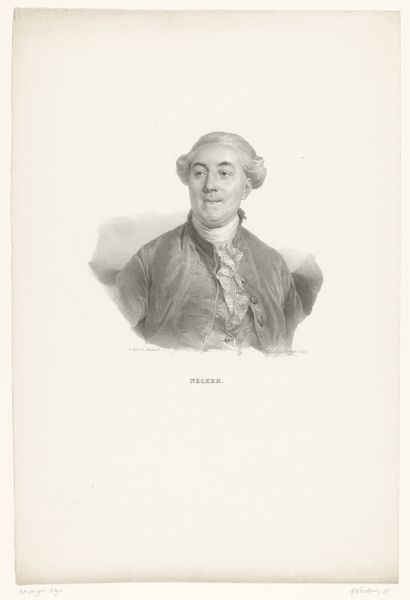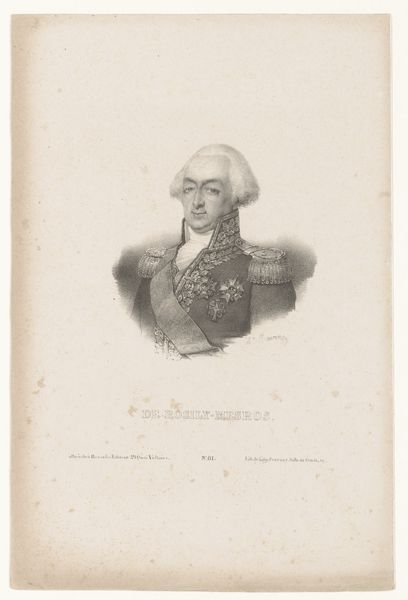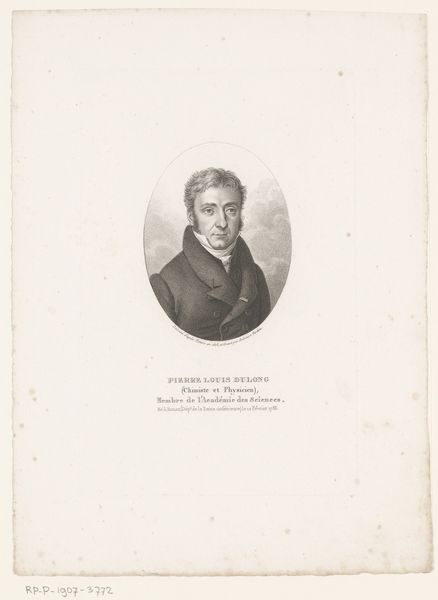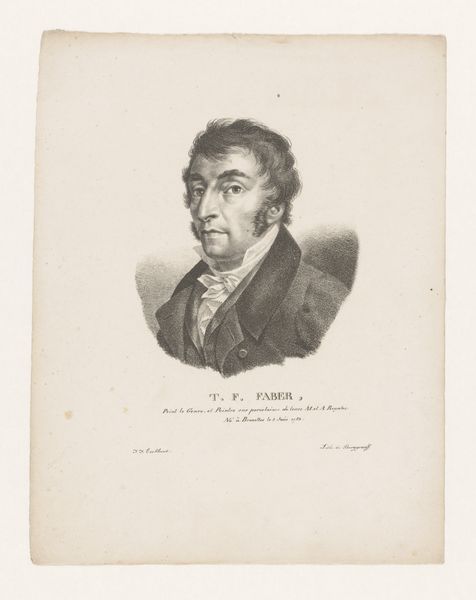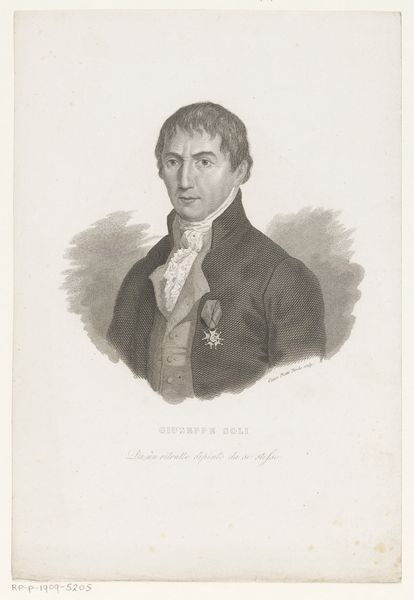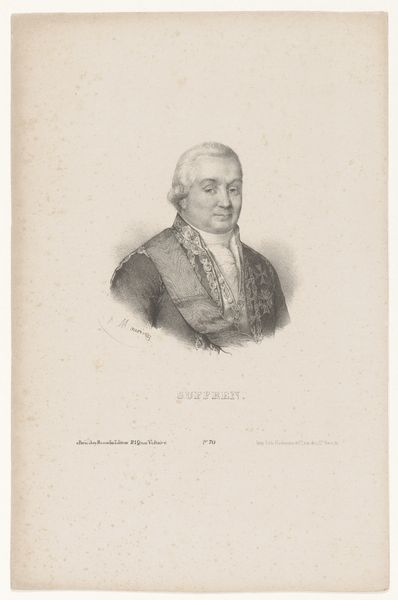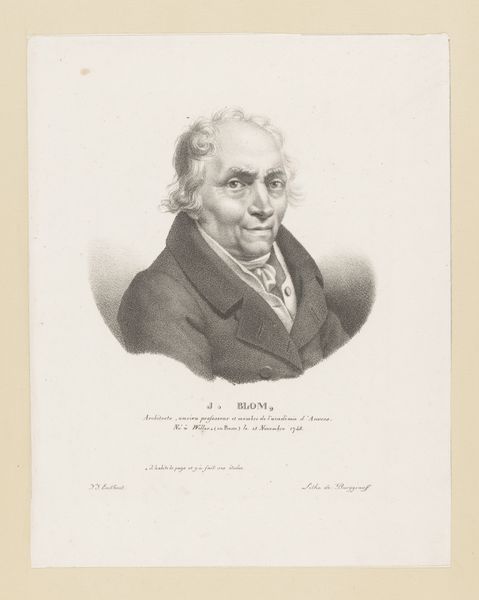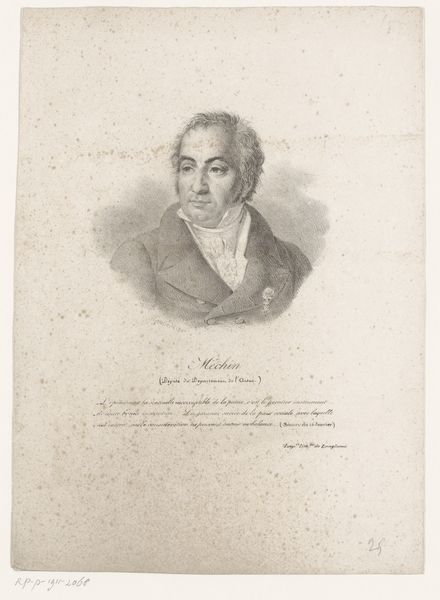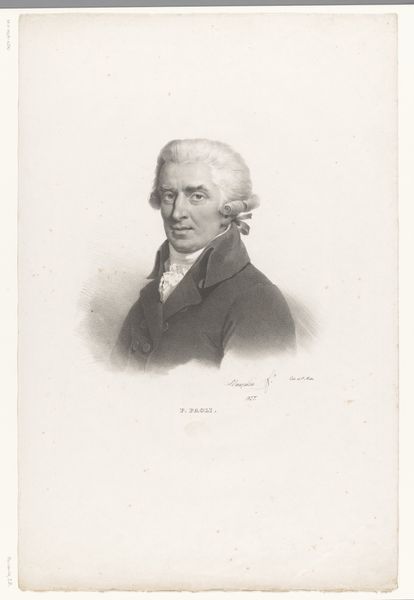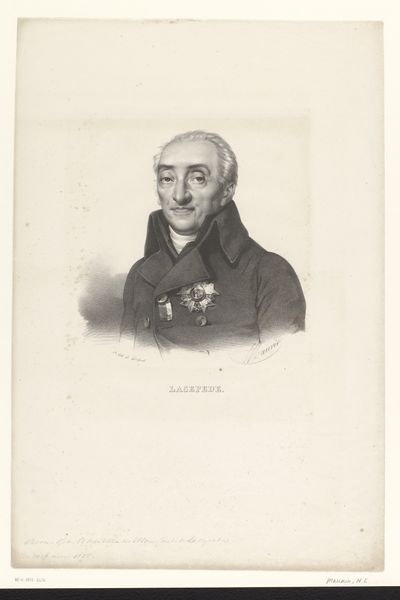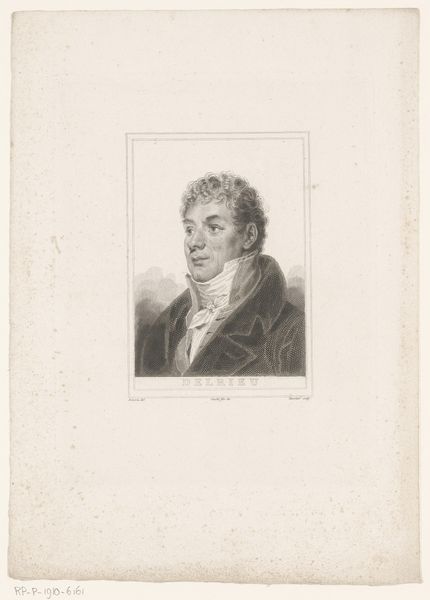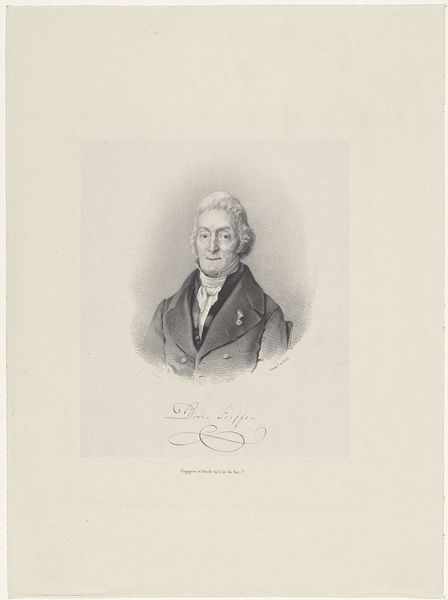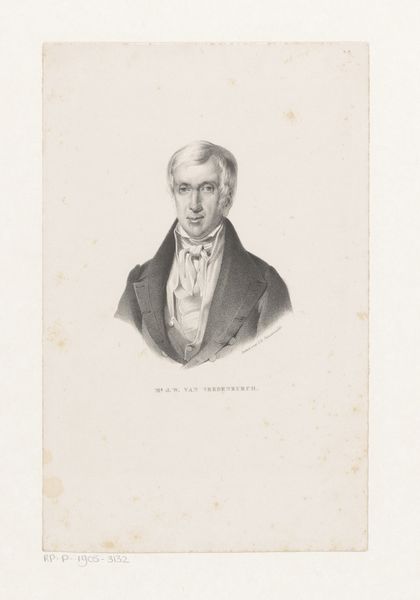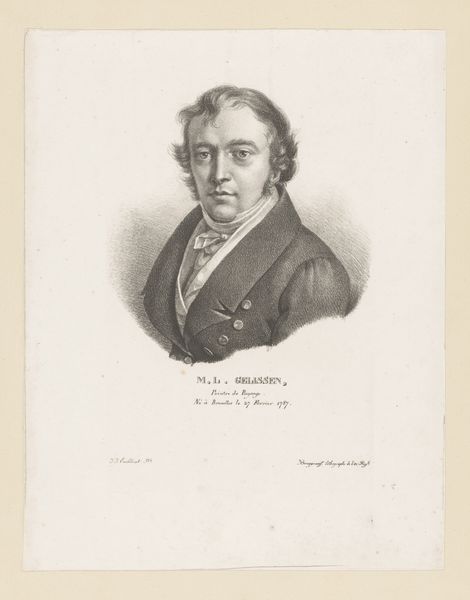
drawing, pencil
#
portrait
#
drawing
#
neoclacissism
#
pencil drawing
#
pencil
#
portrait drawing
Dimensions: height 253 mm, width 184 mm
Copyright: Rijks Museum: Open Domain
Editor: So, this is Bernard Romain Julien's "Portret van Alexandre Méchin," a pencil drawing from around 1827-1830. There's something very… reserved about the sitter. I wonder how portraiture functioned within the French socio-political landscape at the time. What’s your take on this work? Curator: This piece exemplifies how Neoclassical portraiture solidified the status of influential figures. Méchin, a deputy, is presented with gravitas and perhaps a hint of self-importance through his clothing and demeanor. Editor: So, this isn’t just about capturing a likeness? Curator: Precisely. It's a construction of identity linked to power. The meticulous detail rendered in pencil elevates it beyond a simple sketch, making it a symbol of his position. Consider the role that state-sponsored art like this had in reinforcing particular social structures. How might people outside Méchin’s social circle viewed this piece? Editor: It would seem like it might alienate, not unify. The image conveys a degree of aloofness that must have struck a different chord depending on one's social status. Was this type of portraiture always received positively? Curator: No, indeed. Especially during times of political unrest. The idealization of figures could be interpreted as propaganda by some. Editor: This puts the drawing in a totally new light. Curator: Precisely. Recognizing the politics of imagery changes how we understand these objects. Editor: I’ll certainly remember to look deeper into the socio-political implications in portraiture now.
Comments
No comments
Be the first to comment and join the conversation on the ultimate creative platform.
